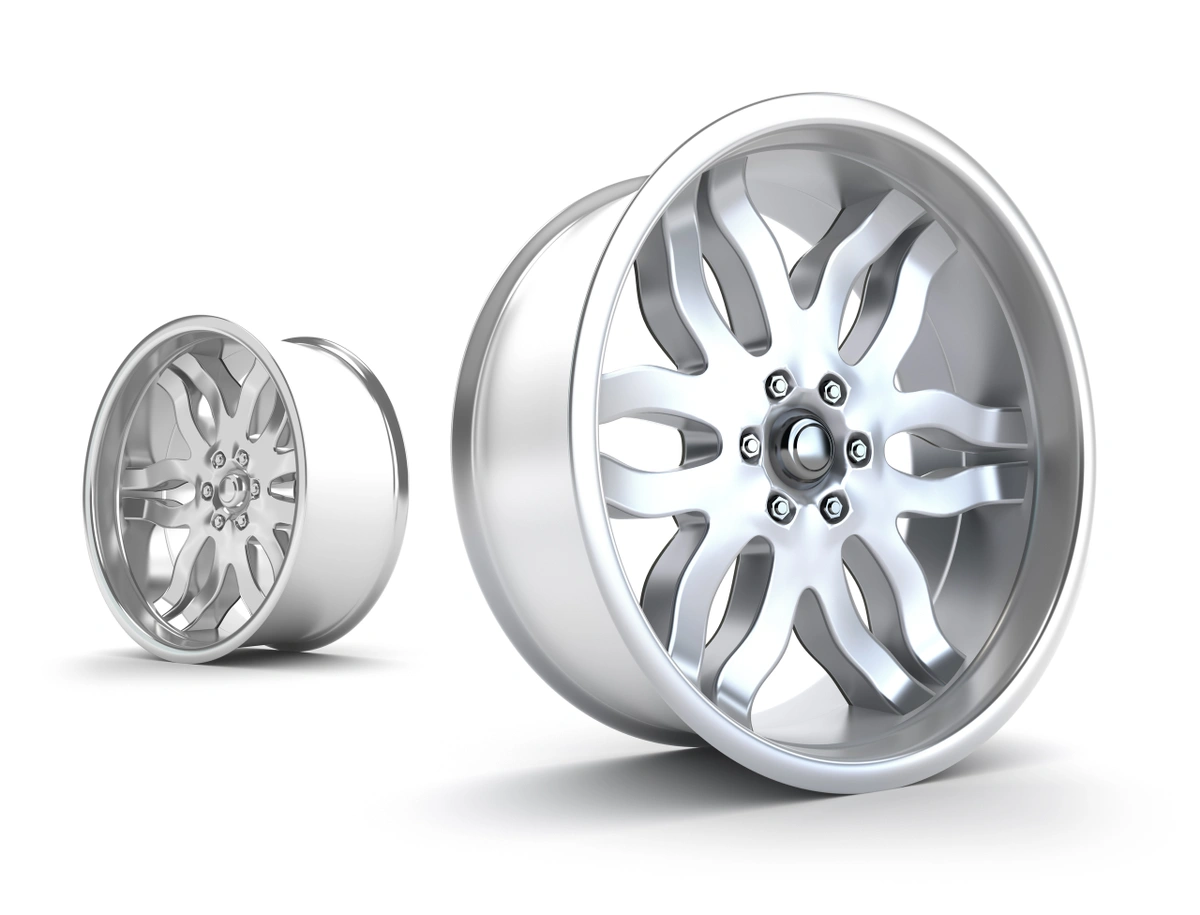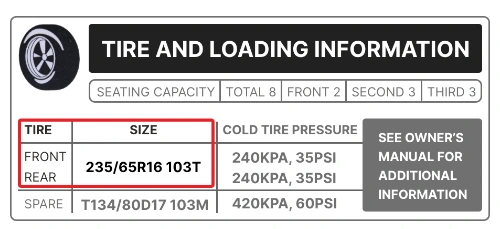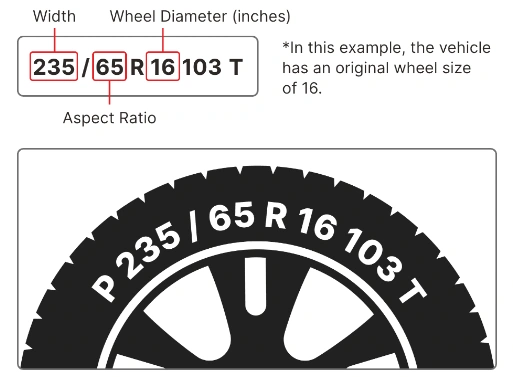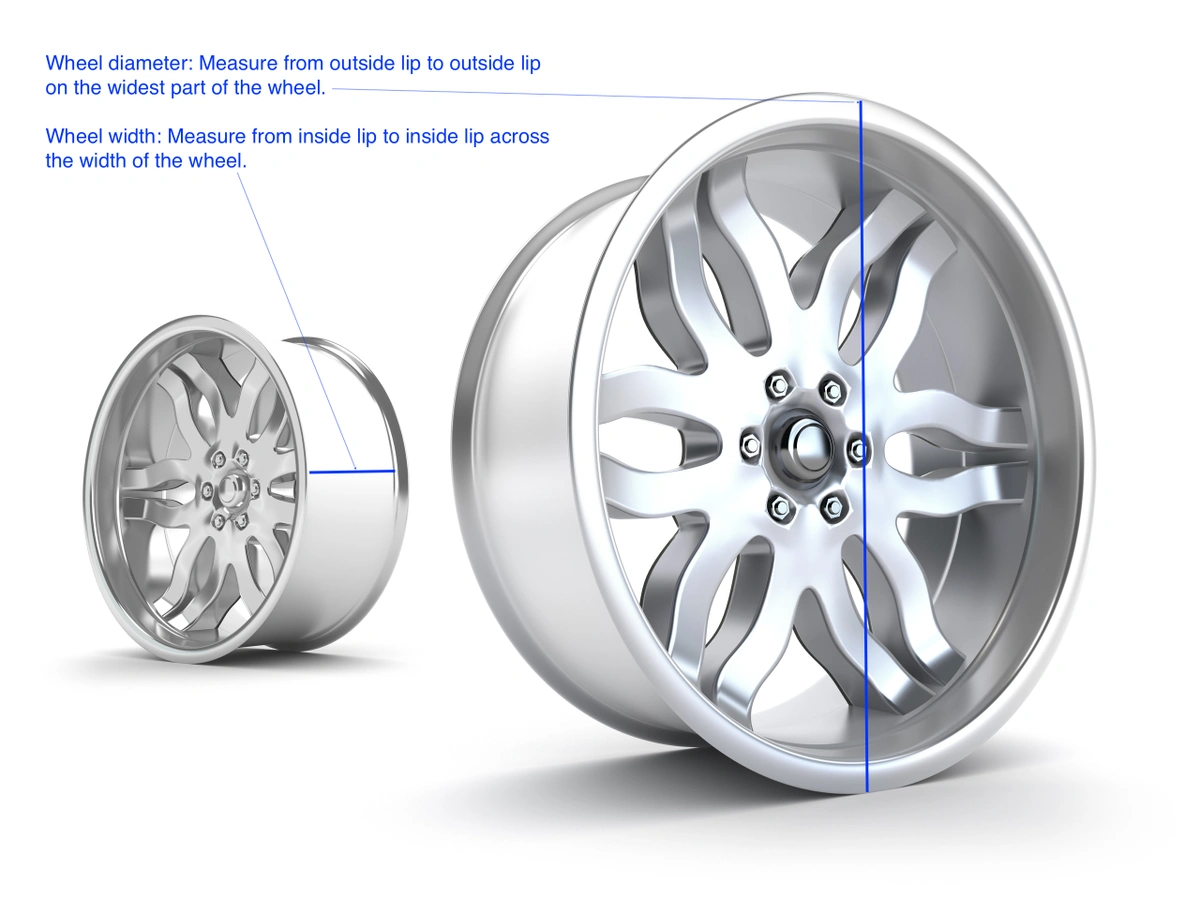Your Shopping Cart
Your cart is empty.
Subtotal ( items)
Instant Rebate Applied:
Promo Code Applied: ID.me Discount Applied:
Have a Promo Code?
Size:
Item
Item
Selected for:
/ each
Add-Ons
Wireless air pump capable of pumping up to 150 psi with 2000 MAH power bank.



Fully protect your clothes and vehicle interior during transportation of your tires. For Tires up to 31" tall and wheels up to 22".
Per sensor
Add TPMS Sensors
/per sensor
Please confirm the make, year, model and trim of the vehicle you want to purchase for:
How many sensors do you need?
The vehicle you have selected is not compatible with aftermarket TPMS Sensors.
Enter a different vehicle to add TPMS sensors

 Front Tire Size:
Front Tire Size:
 Rear Tire Size:
Rear Tire Size:
 Your Vehicle:
Your Vehicle:
Pros & Cons of Staggered Fitment

Attractive Design

Improved Handling

Improved Cornering
Bumpier Ride
Poor Traction in Snow
How do I find my tire size?



Need help?
 Your Vehicle:
Your Vehicle:
Pros & Cons of Staggered Fitment

Attractive Design

Improved Handling

Improved Cornering
Bumpier Ride
Poor Traction in Snow
How do I find my tire size?



Need help?
Pros & Cons of Staggered Fitment

Attractive Design

Improved Handling

Improved Cornering
Bumpier Ride
Poor Traction in Snow
Need help?
Need help?
How do I know if I have an LT tire?

 Your Vehicle:
Your Vehicle:
Sorry, we could not find any available
wheels for your sizing selections.
Need help?
Rim Sizes Explained: How to Read Wheel Markings
By Tire Agent Staff
October 04, 2022
If you're looking to buy a new set of wheels or tires, you'll need to know how to read wheel markings. Vehicle wheels (AKA rims) are not one-size-fit-all, and they have a lot of measurements that you'll need to consider.
Wheel markings are codes that might tell you the size and load rating of the wheel. These codes are typically stamped on the inside of the wheel, which means you might need to safely remove the entire wheel and tire assembly, so you can read the wheel size.
Note: If you're simply looking to replace your existing wheels with new ones, you can use Tire Agent's wheel matching technology to find ones that will fit your vehicle. You'll need to know your vehicle's make, model, year, trim level and tire (not wheel) size.
Where is your tire size? It's clearly visible on the outside of your tire and on the sticker on the inside of your driver's door. The sizes will look something like this:
The meaning of wheel size can refer to the entire wheel and tire assembly, or it can refer to just the metal rim that houses the tire. You'll see people in the automotive industry use "wheel" to refer to a wheel with a tire or without a tire. For the purposes of educating our readers, we're going to refer to wheels (metal) and tires (rubber compounds) as two separate parts.
Tire size differs from wheel size, which we explain next. One common question we get is, can you change the size of your rims or tires? This isn't a simple yes or no. We cover tire sizes in a separate post.
Where to Find Wheel or Rim Size
Wheel manufacturers are not held to the same standards as tire manufacturers. The U.S. government requires tire manufacturers to disclose tire information on the visible portion of the tire, which is referred to as the DOT code. We cover DOT codes in a separate blog post.
In short, the DOT codes tell consumers where and when tires were made, as well as the tire size. There are three numbers that explain tire size. For example, P205/65R15 means that the tire is 205 mm wide, and the height of the tire is equal to 65% of the tire's width. The last number, 15, refers to the wheel diameter that the tire will fit.
How to Measure Wheel Width
Most experts recommend removing the entire wheel and tire from the vehicle and laying it on a flat surface, so you can safely take measurements.
To measure the width of the wheel, start at the inside of the lip (the rim) and go to the other side. To measure the diameter, start from the outside of the lip and end straight across to the outside of the lip (at the widest part of the tire).
See the illustration below.
Car Wheel Dimensions Explained
Some manufacturers stamp information on the inside of their wheels, which might include:
- Maximum load, also known as load index, which is typically expressed in pounds in the United States. So, a max load of 1,000 pounds would be appropriate for a vehicle whose gross axle weight rating (GAWR) is equal to 2,000 pounds, you'd need wheels that at a minimum can carry 1,000 pounds (because there are two wheels per axel). Check your owner's manual to find your vehicle's GAWR.
- Maximum PSI refers to the maximum pounds per square inch of air the tire should hold. That number is also on the placard on the inside of the driver's door.
- Wheel diameter and width might be expressed as a mathematical term, such as 16×7, which means the diameter is 16 inches and the width is 7 inches.
- Wheel offset measurements may be expressed following the letters "ET," as in ET0, which would mean an offset equal to zero. What does ET mean? It's a German phrase, einpresstiefe, which translates to "insertion depth," according to Konig.
- Model number might also be stamped on the wheel, which will be unique to each manufacturer.
- Manufacturing date is also an optional code that you might find on the wheel. Manufacturing date is not required on wheels, like it is for tires, because the metal has a much, much longer shelf life than the organic compounds that comprise rubber tires!
Understanding Wheel Sizes and Rim Specifications
As much as we like to think that manufacturers' guidelines and government regulations are all about making tire and wheel measurements easy to understand for the average consumer, it isn't. It's nothing like walking into a self-service shoe store and finding shoes that fit your shoe size. Tire and wheel specs are complicated, but once you understand the basics, you easily shop online for tires and wheels.
If you want to replace your car wheels, and you need help finding the information, reach out to a Tire Agent specialist. We can walk you through finding the best rims to fit your car, truck, SUV or crossover.
Illustration 18871328 / Car Rims  Alexandr Mitiuc | Dreamstime.com
Alexandr Mitiuc | Dreamstime.com
Next Post:
What Are Low-Profile Tires?How to Qualify for the $50 Offer
- Add items to your cart and begin checkout.
- Select PayPair and apply for financing.
- If you’re approved by a participating lender, you’ll see a $50 promotional rebate applied to your order total.
-
To receive the $50, you must:
- Complete your purchase with a qualifying lender,
- Agree to the payment terms,
- And make the required number of consecutive on-time payments, as specified by the lender.
Note: Offer available only through select lenders. Additional eligibility requirements and conditions apply. Rebate may be issued after verification of qualifying payment activity. Terms subject to change.
How to Purchase Tires and Wheels
With a Payment Plan
Tire Agent's payment plans make it easy to get the best partial or full set of tires and wheels for your vehicle.
It's fast, secure and won't affect your credit score
Match with multiple lenders
Why Choose PayPair?
PayPair’s Partners and Plans

No Money Down

No Money Down

No Credit Needed*

No Money Down

$1 to Start!*

No Money Down

No Credit Needed*

$1 to Start!*

No Money Down
Other Payment Plans

$0 to Little Down

Pay with your bank account

Simplified checkout experience

Faster and easier than using cards or cash

Simplified checkout experience

Faster and easier than using cards or cash
*SNAP: The advertised service is a lease-to-own agreement provided by Snap RTO LLC. Lease-to-own financing is not available to residents of Minnesota, New Jersey and Wisconsin. NO CREDIT NEEDED: Not all applicants are approved. While no credit history is required, Snap obtains information from consumer reporting agencies in connection with applications, and your score with those agencies may be affected. PAYMENT PLAN: The standard plan consists of renewable lease terms. To exercise an early ownership, consumers must make regular payments on time and schedule additional payments via the customer portal or by contacting Customer Care at 1-877-557-3769. KATAPULT: The Promotional Initial Payment (plus any applicable taxes and fees) is due at lease signing. Your lease-purchase payment amount will be determined after you select your product(s). You will not acquire ownership of the product(s) if the total amount necessary to acquire ownership is not paid. The Promotional Initial Payment does not reduce the cost of the lease-purchase agreement. The Promotional Initial Payment is only available when shopping at Tire Agent through the Katapult mobile app and at Tire Agent’s website. Product pricing subject to change and availability. Disclosure: 90-day early purchase option (EPO) terms and conditions apply: 90-Day (3 months in CA) You can buy out your lease-to-own agreement within the first 90-days. This amount includes the cash price, plus the lease-to-own cost for the first 90-days. Taking advantage of the 90-day purchase option will save you the most money! PROGRESSIVE: Ownership by rental/lease agreement with Progressive Leasing costs more than the retailer’s cash price. Select items only. Cancel or purchase early at any time. Not available in MN, NJ, VT, WI, WY. Progressive Leasing obtains information from credit bureaus. Not all applicants are approved. Standard agreement offers 12 months to ownership. 90-day purchase options cost more than the retailer’s cash price (except 3-month option in CA). To purchase early or to cancel lease, you must call 877-898-1970. Retailer cannot activate early purchase options.




